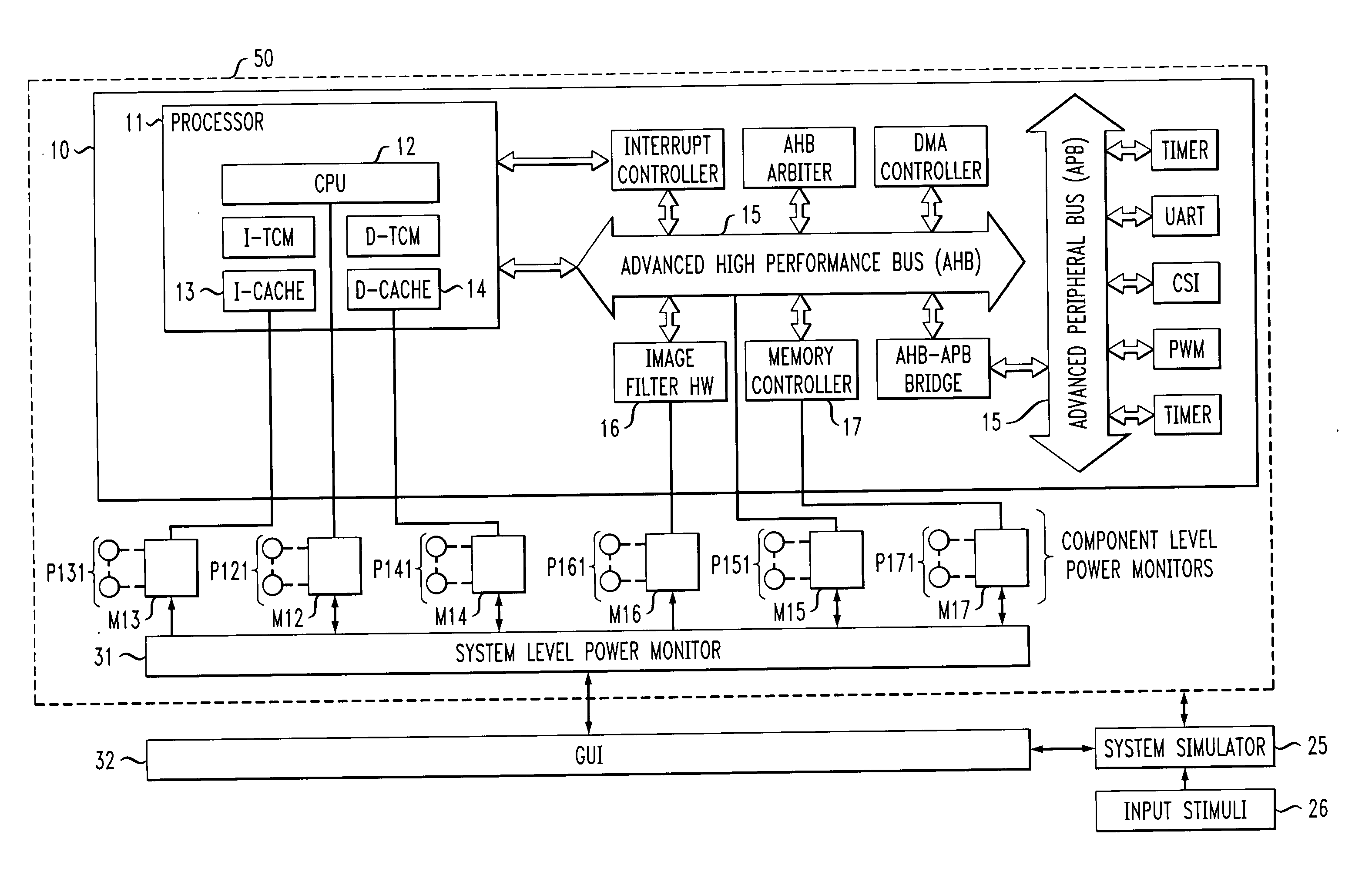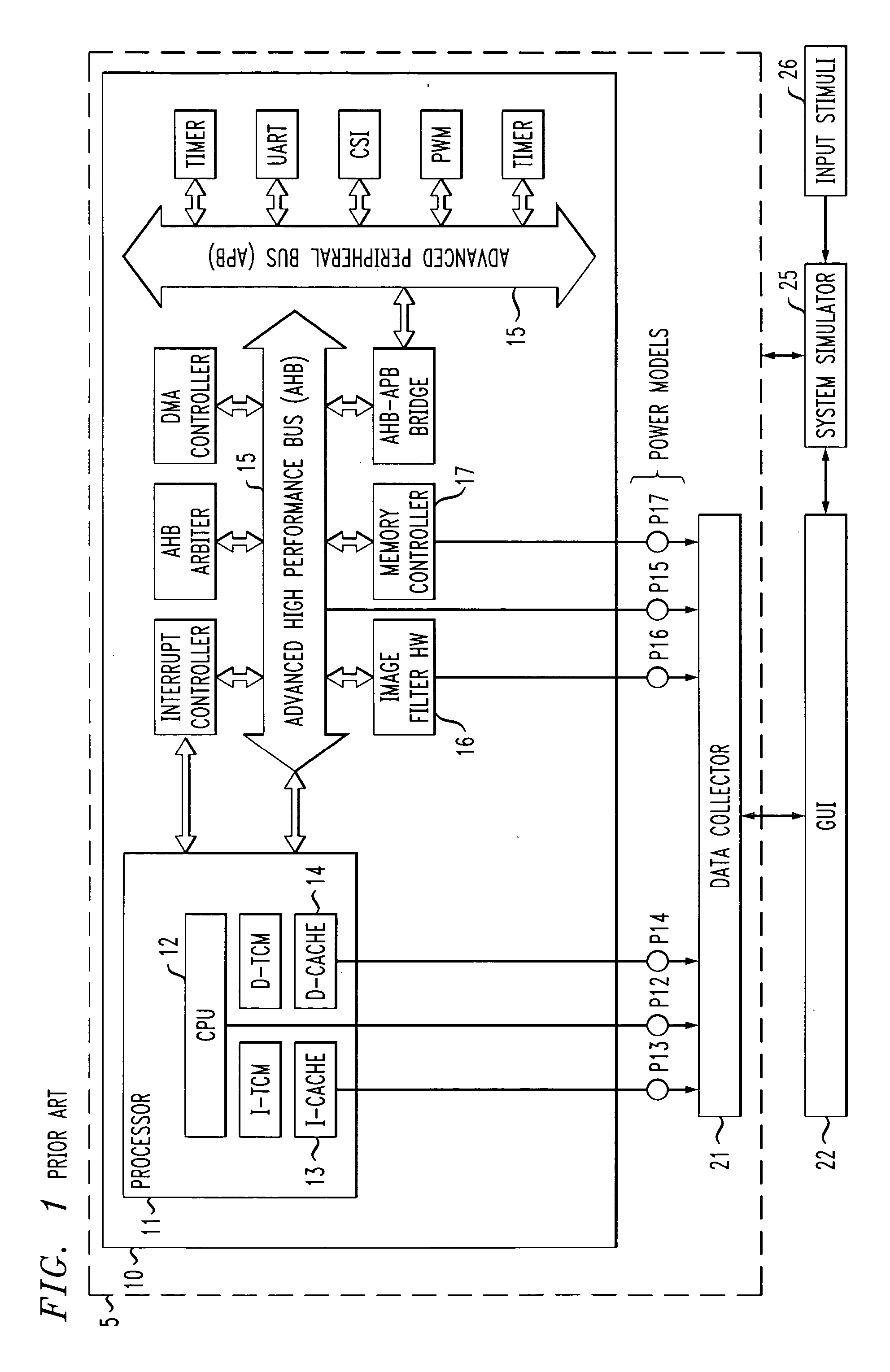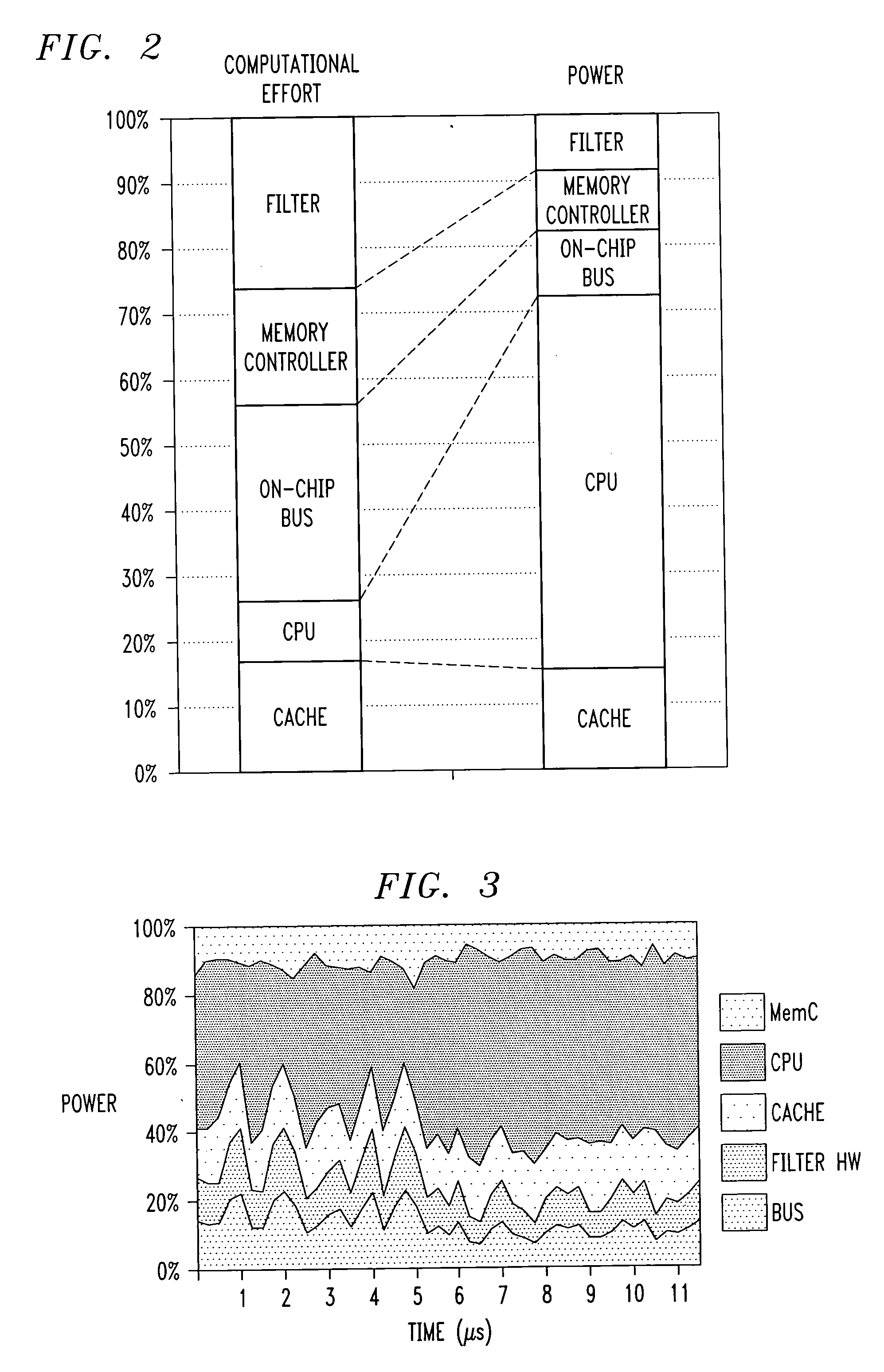System-level power estimation using heteregeneous power models
a power model and power estimation technology, applied in the field of system-level power estimation using heteregeneous power models, can solve the problems of significant reduction of computation effort required for the overall power estimation etc., and achieve the effect of increasing accuracy, small reduction in accuracy, and effect on the accuracy of the overall system power estimation
- Summary
- Abstract
- Description
- Claims
- Application Information
AI Technical Summary
Benefits of technology
Problems solved by technology
Method used
Image
Examples
Embodiment Construction
1. Prior Art
[0026]FIG. 1 depicts a typical prior art power estimation framework for estimating the power consumption of a target system-on-chip. Although the framework is shown as a block diagram of physical components, those skilled in the art will appreciate that system simulation is performed by modeling system components in software and then executing a computer program that simulates the operation of the system for a period of time based on the modeling, this being referred to here as a simulation run. During the simulation run, test inputs are postulated and system inputs and outputs, as well as other parameters, such as power consumption of various components, are computed as part of the simulation of the operation of the system.
[0027] Framework 5 of FIG. 1 includes simulatable, functional models of each component of the system-on-chip, designated as system, or platform, 10. A suite of input stimuli 26 designed by the system designer are provided to a system simulator 25 w...
PUM
 Login to View More
Login to View More Abstract
Description
Claims
Application Information
 Login to View More
Login to View More - R&D
- Intellectual Property
- Life Sciences
- Materials
- Tech Scout
- Unparalleled Data Quality
- Higher Quality Content
- 60% Fewer Hallucinations
Browse by: Latest US Patents, China's latest patents, Technical Efficacy Thesaurus, Application Domain, Technology Topic, Popular Technical Reports.
© 2025 PatSnap. All rights reserved.Legal|Privacy policy|Modern Slavery Act Transparency Statement|Sitemap|About US| Contact US: help@patsnap.com



